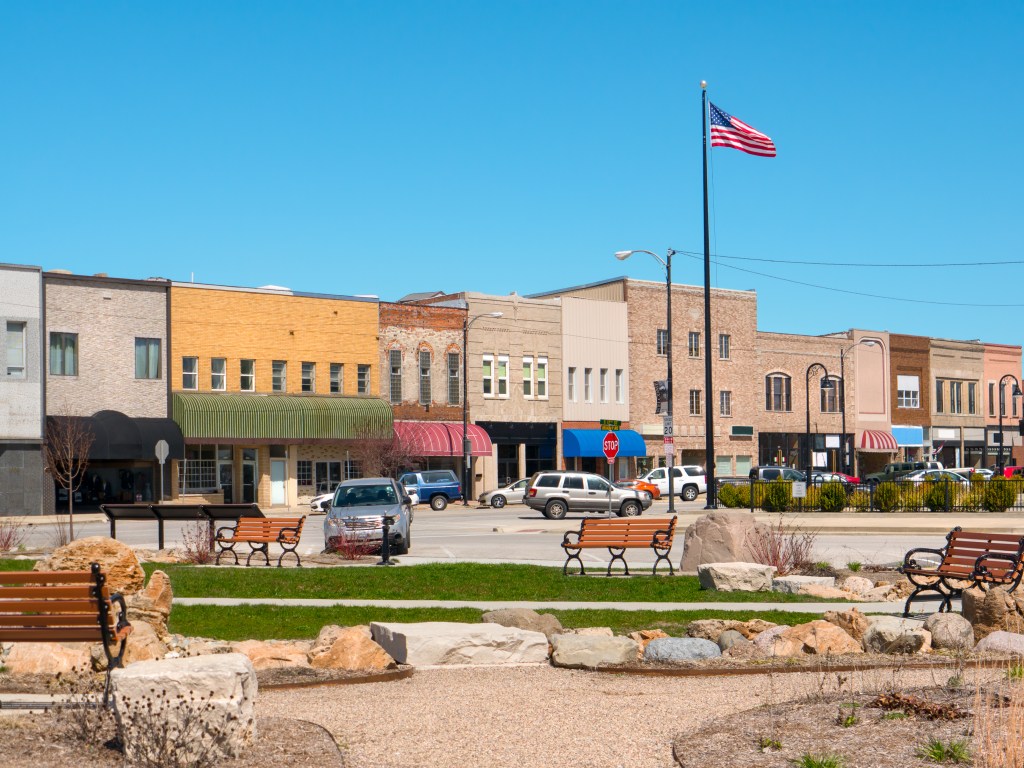
San Francisco 49ers quarterback, Brock Purdy, got the challenge—which means opportunity—of a lifetime. His first professional football start was against arguably the greatest of all time. Tom Brady and his Tampa Bay Buccaneers were in town. “Mr. Irrelevant,” the last pick of the 2022 NFL draft, didn’t request this script. He was ready, though, to flip it. Purdy, and a great supporting team, defeated Tampa Bay 35 – 7.
Turns out Purdy was never irrelevant. Just someone who was given a chance and then did something with it.
Rural communities in Iowa have challenges, too. Despite that, they want the ball and the opportunity to show what they can do with it. Give them a fair chance. They’ll take it from there.
Fairness, though, isn’t always a given. Rural Iowans know when the playing field isn’t level.
Start with Iowa roadways.
According to 2020 census data, about half of Iowa’s population live in 90 counties that are primarily or moderately rural. It’s not unusual for those living in rural communities to travel 20, 40, 60 miles or more, round trip, to get to their job, the grocery store or the doctor. That’s a lot of trips to the gas pump, and gas taxes are what pays for roads. Good roads are also necessary for economic development in small towns. It’s almost impossible to lure an industry, and the jobs it brings with it, without good infrastructure. Without jobs, small towns die.
According to the Iowa Department of Transportation, it plans to build or improve about 1,250 miles of roadways from 2022 – 2026. Most of these improvements are planned in or around metro areas with limited road projects going to rural counties. For example, the 10-county rural region of Northeast Iowa is slated to receive about 65 miles of road improvements or about five percent of budgeted projects.
Rural Iowans pay for a lot of roads with long-commute gas taxes. They just have to drive to metro areas to enjoy them.
Secondly, many small towns in Iowa didn’t have access to high-speed, fiber optic internet services until recently. Small towns—just like cities—depend on technology to grow businesses and compete efficiently. The Empower Rural Iowa Broadband Grant Program helped deliver needed broadband services to finally make that happen. These businesses aren’t guaranteed success, but at least they now have a fairer chance to compete.
But while connectivity is improving in small towns, there are still many rural residences without access to high-speed internet. It’s a quality-of-life issue, especially for younger generations. The countryside will continue to empty out without it.
Lastly, rural counties and local communities are struggling to provide adequate emergency health care and ambulance services.
A greater percentage of the elderly live in rural communities compared to urban areas, and they are primary consumers of health care. The Iowa Department of Public Health projected that by year 2030, 22% of the state’s total population will be over the age of 65 and living in rural areas. Needs will grow. Services may not be able to grow with it.
A few states provide some type of supplemental financial assistance to emergency medical and ambulance services. Iowa is not one of them.
There are only so many taxpayer dollars to go around. But the harder it is to obtain ambulance services, the more rural Iowans will question wasteful spending by the state. When allocating resources, every legislator should be asking the question, “Is this more important than leaving rural communities without access to ambulance services?”
Rural Iowans pay a ton of gas taxes. They’re still waiting for more blanketed broadband coverage. And they have higher elderly populations that require access to emergency health care and ambulance services.
But they’re also like every other community in Iowa, whether it’s rural, urban or suburban. They just want a chance to succeed and to show that they’re not irrelevant.
Allocate resources fairly, and rural Iowans will put up the points.